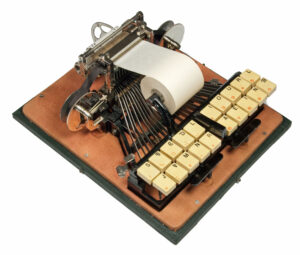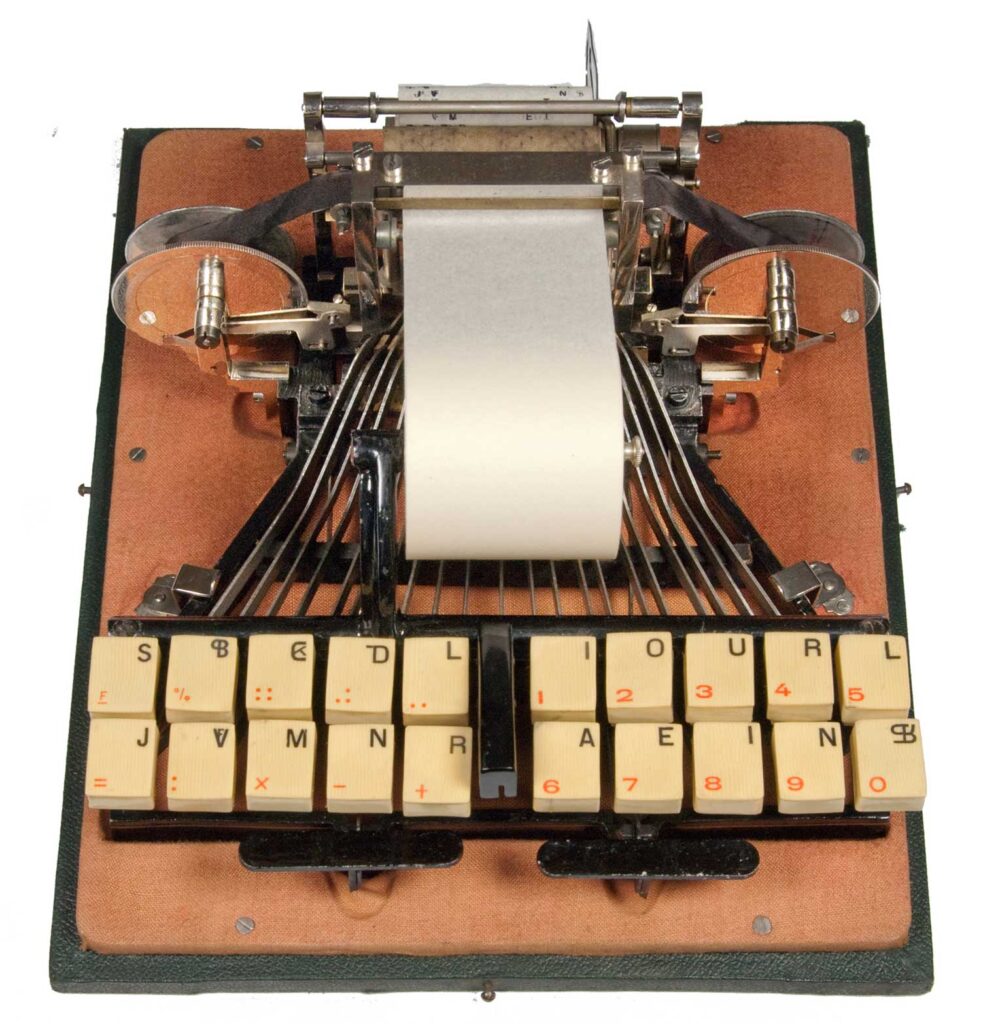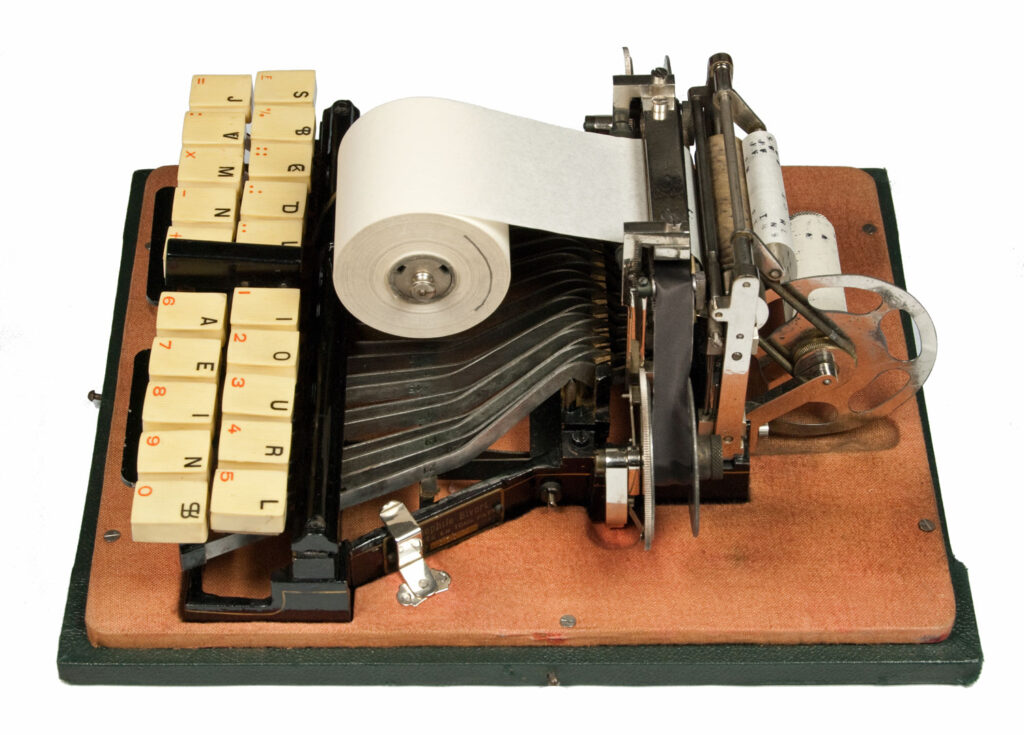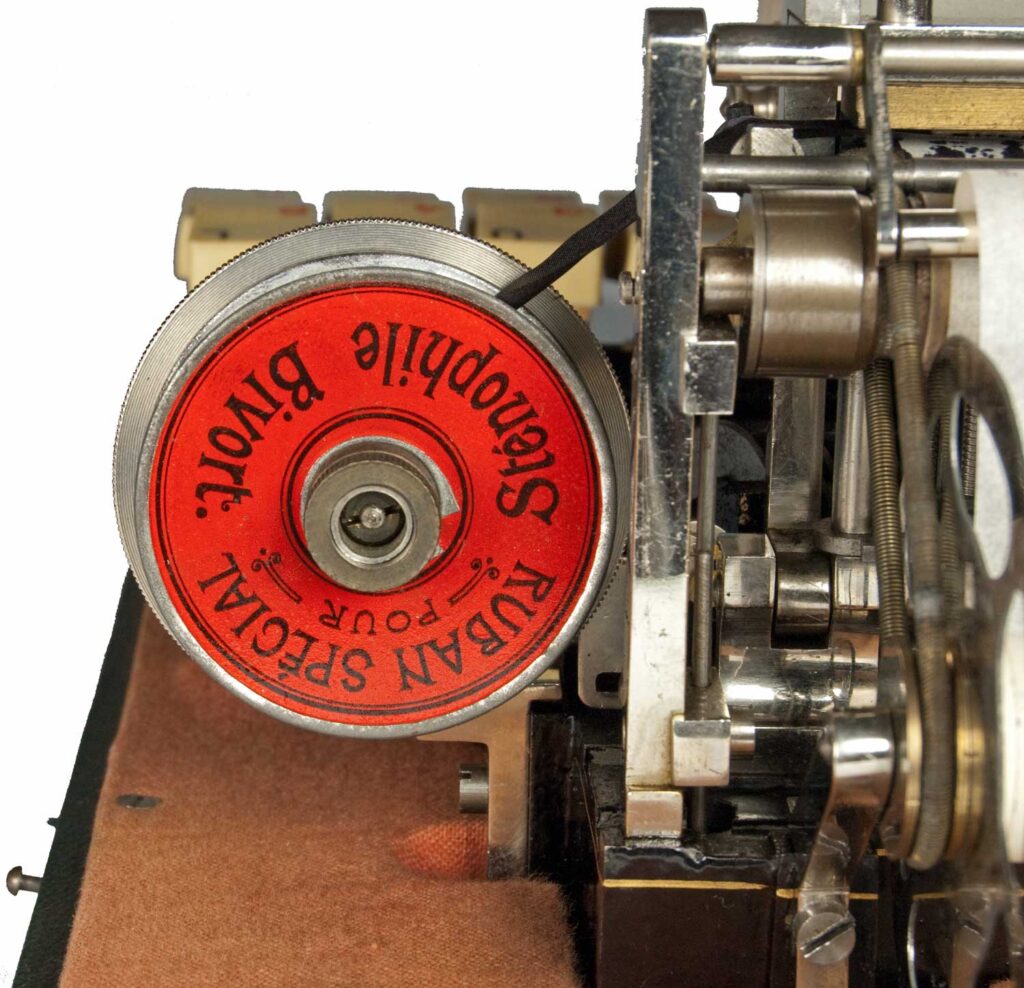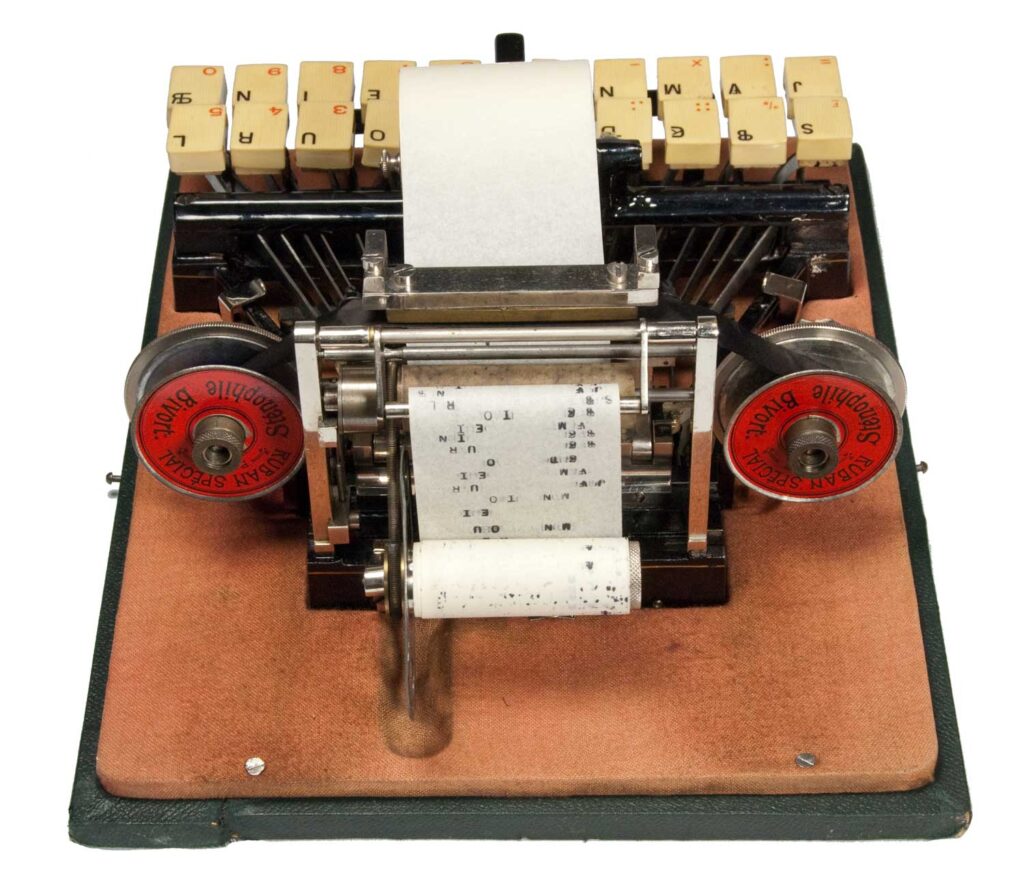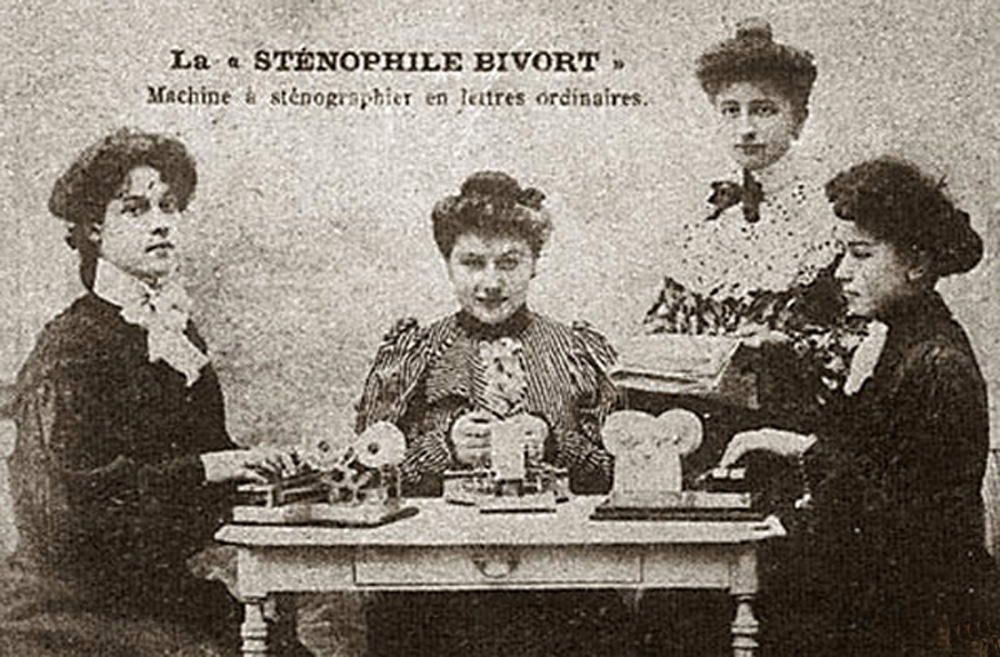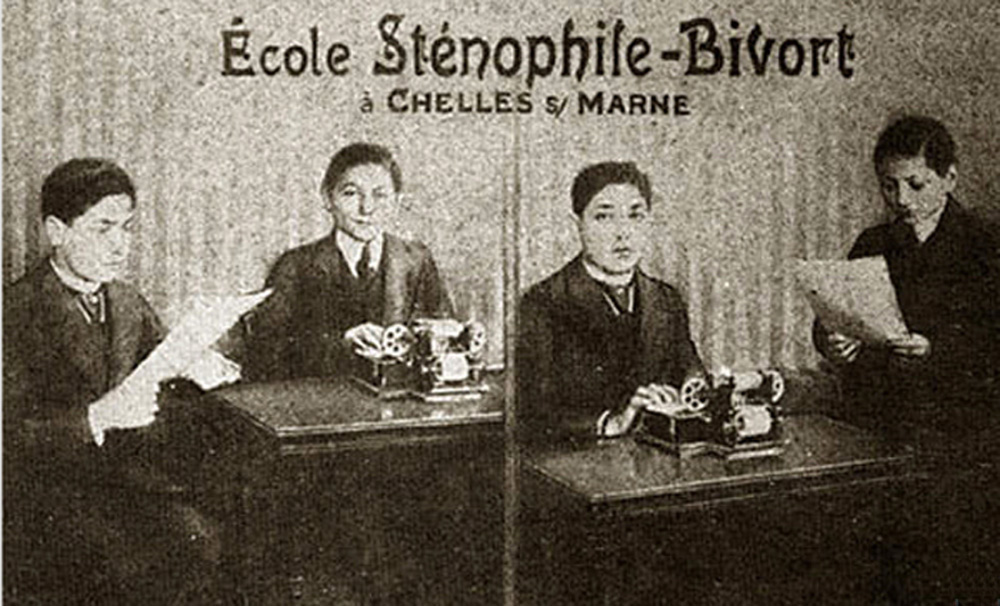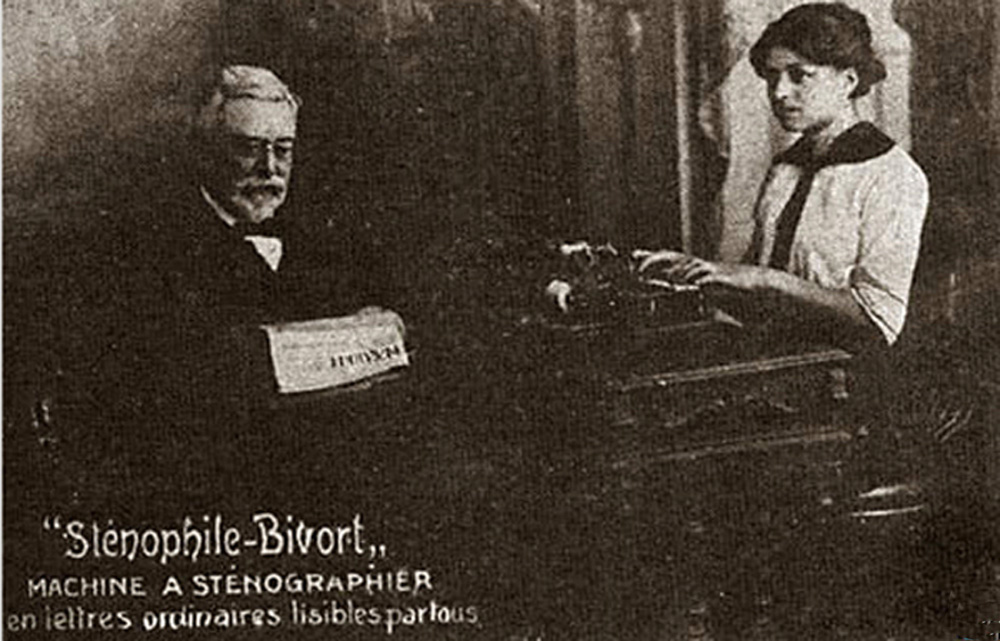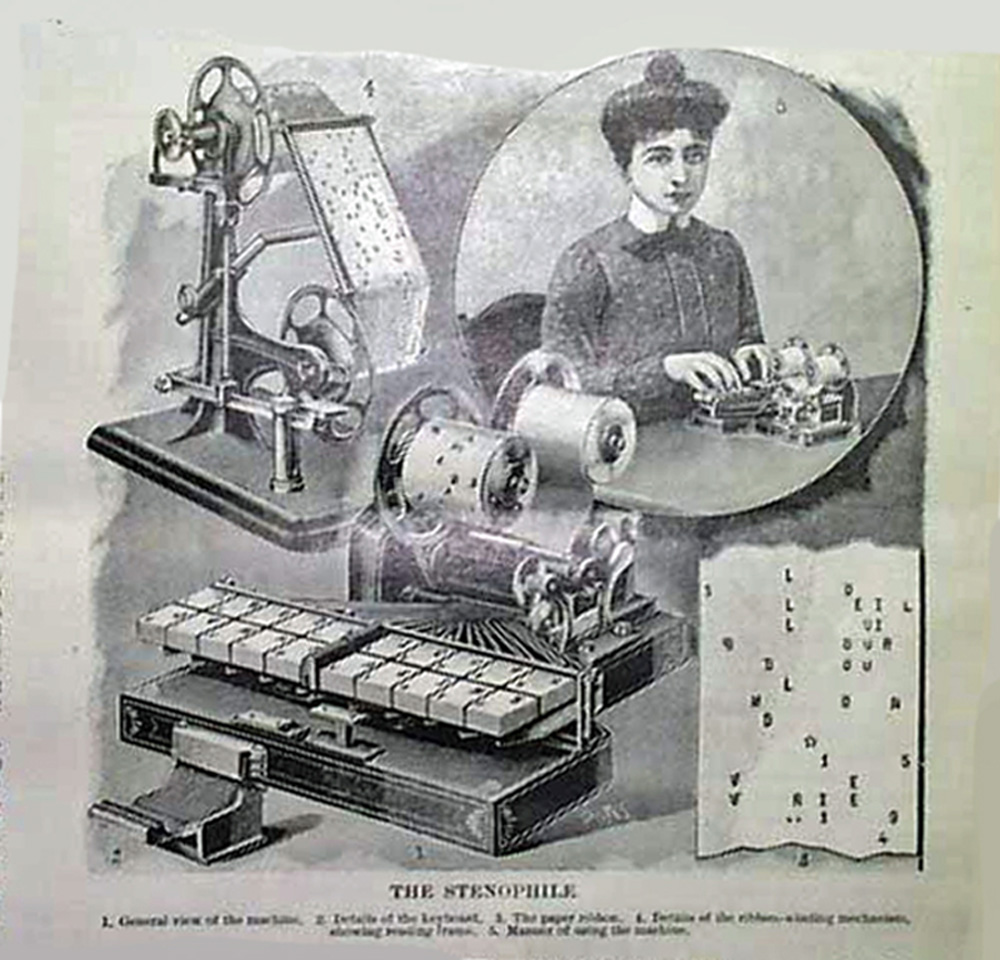The Stenophile is a shorthand machine invented by Parisian Charles Bivort in 1904. It is a beautifully constructed device, built with the utmost mechanical quality. Visually, it is defined by its handsome square keys, covered in celluloid and reminiscent of Mahjong tiles.
A description from Popular Mechanics (May, 1905) highlights the promise of the Stenophile:
“From a Frenchman, M. Bivort by name, has recently brought out a machine which he calls the Stenophile which promises to be of the greatest value, inasmuch as it is capable of practical use for all business purposes and is qualified to supplant the present method of writing shorthand by hand. … M. Bivort has designed an alphabet in which all similar consonant sounds are consolidated, and has constructed a system of syllabic writing by means of which the operator is enabled to attain the speed of shorthand writers of to-day. Following the phonetic principles used in present systems he has combined several of the consonants, such as B and P, V and T, and T and D etc., thus reducing the number of keys necessary to twenty, ten for each hand.”
A key benefit of the Stenophile’s design is also noted:
“One of the greatest difficulties with shorthand as now written is that the writer is usually the only one capable of reading his notes, and if he is hard pressed the rapidity of his writing distorts the characters so much that he himself often experiences difficulty in their transcription. By use of the Stenophile this difficulty is removed. The characters as written are constant in form and are easily transcribed by all who understand the basis of the system.”
